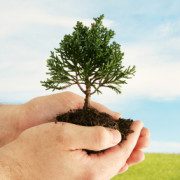How big is your network… And how strong?
Have you paused to consider the full scope of who’s in your network? When I talk with law students, they often worry that they don’t have a network yet or consider their network to be composed of other law students and lawyers with whom they’ve worked or met at some event, and that perception may or may not change over time. I often ask clients about their network when we’re discussing business development or job changes, and I’m surprised at how narrowly some people define their network.
A Business Week online interview suggests using a tree analogy to analyze the scope of your network:
In the book, I describe multiple ways to map and analyze your network. My favorite way is to describe your networking journey in a narrative summary while in parallel creating a network tree diagram. I describe how my network has formed since birth, starting with my parents, siblings, aunts and uncles, cousins, friends of the family, my friends, school friends, business associates, parents of my son’s friends, etc. If this is done in chronological order, you can see how your network has formed over time and how it has grown, sometimes slowly and sometimes very quickly.
Now, I’m not necessarily suggesting writing your life story and creating your network tree in the process. I’m sure it’s an effective approach, but the idea is a bit daunting, barring a compelling reason to write such a narrative. (It sounds like a great thing to do “one of these days,” except that those days tend never to come.) But I do like the idea of drawing a tree and noting important branches of a network that could otherwise go untapped. That’s a shorter process, and when I tried it, I quickly discovered that my network is actually quite a big larger than I’d realized.
What I like even better about this network-as-tree analogy, though, is that it’s a nice reminder that a network is only as healthy as the environment that nourishes it. It requires attention: even a strong tree will be weakened without sufficient water and sunshine, and a network weakens without contact. A tree grows more quickly when fertilized, and a network expands with conscious effort. And, like a tree, sometimes a network is stronger if a branch is pruned– if, for example, effort is going into a “nonproductive” group of the network. Note, however, that groups can be “productive” if they create supportive personal connections just as much as if lead to business or career opportunities.
How large is the tree that represents your network? How strong is it? What attention does it need to grow stronger?




Leave a Reply
Want to join the discussion?Feel free to contribute!